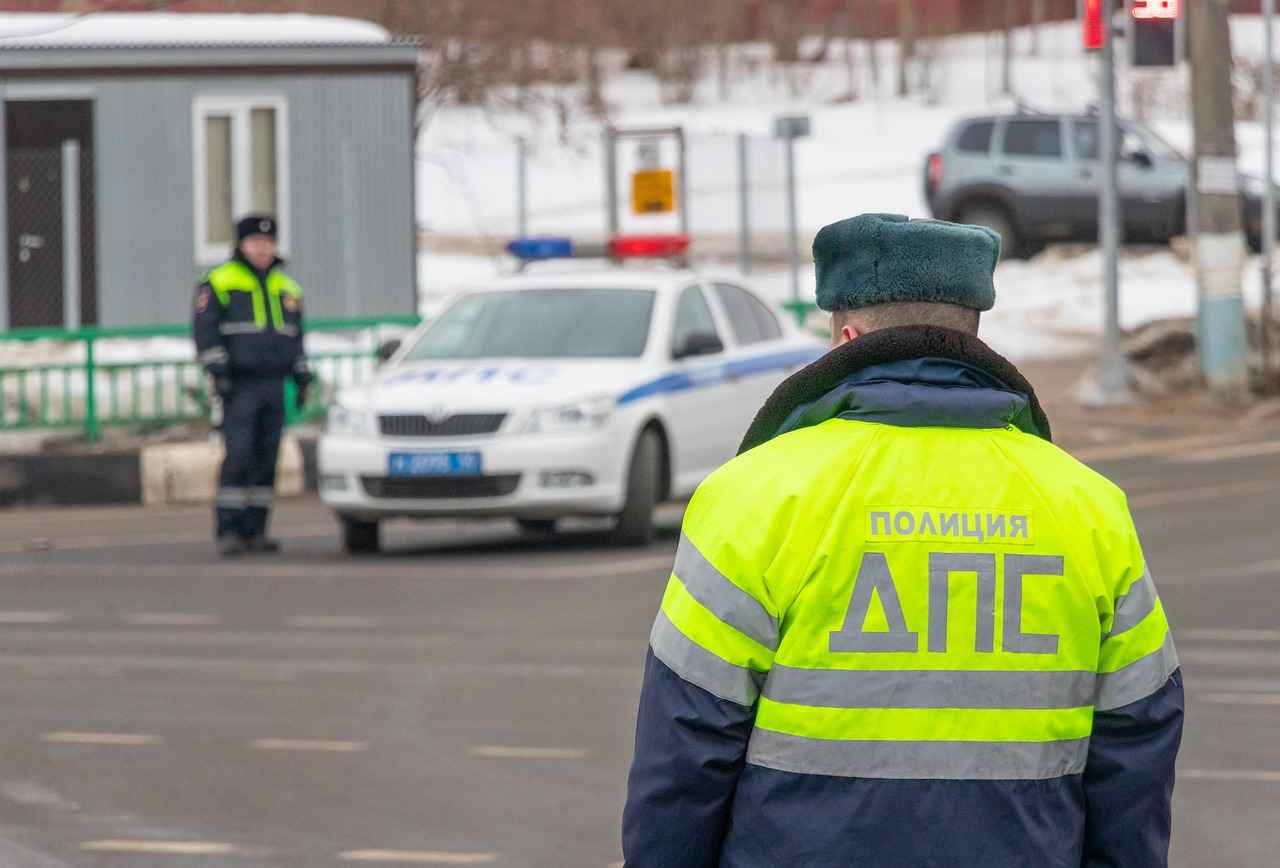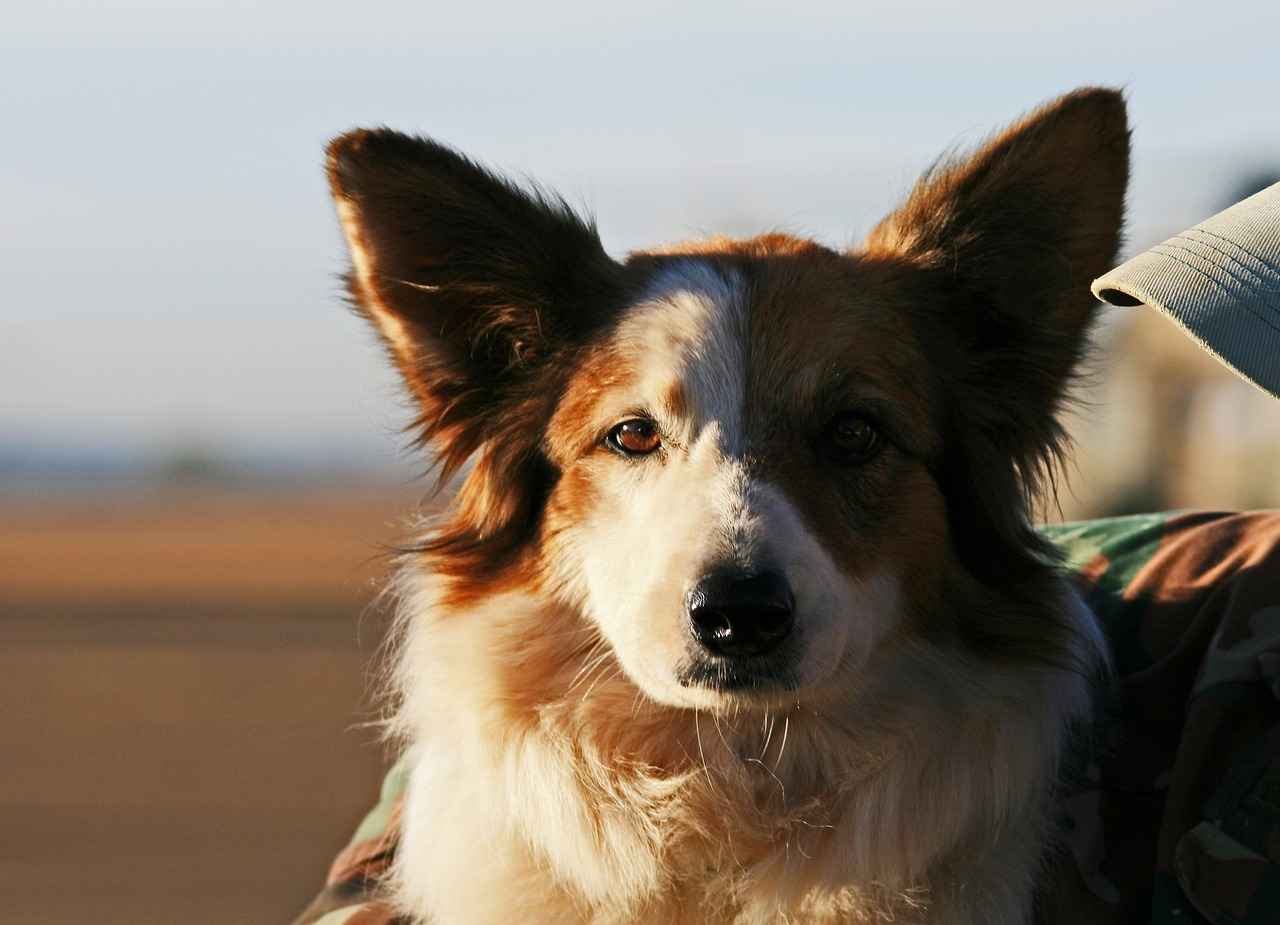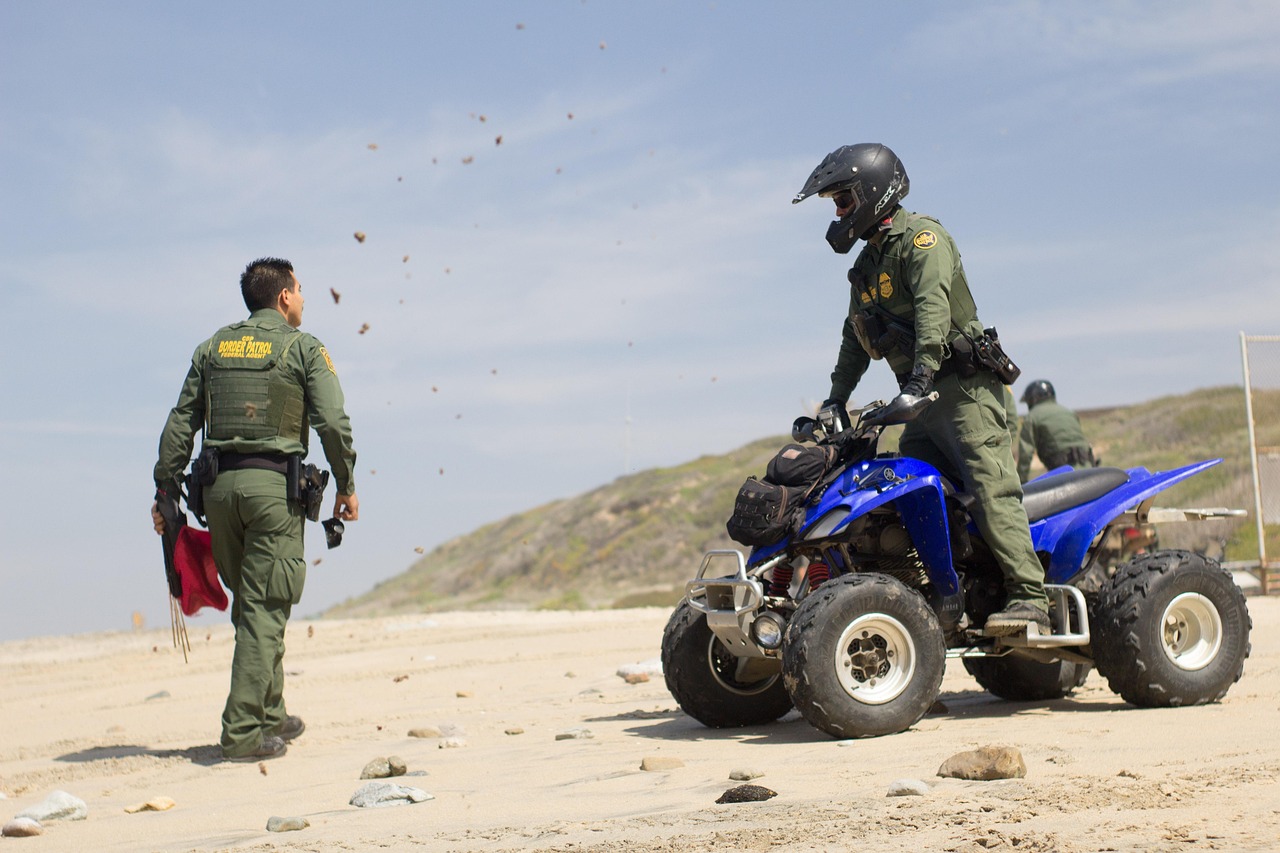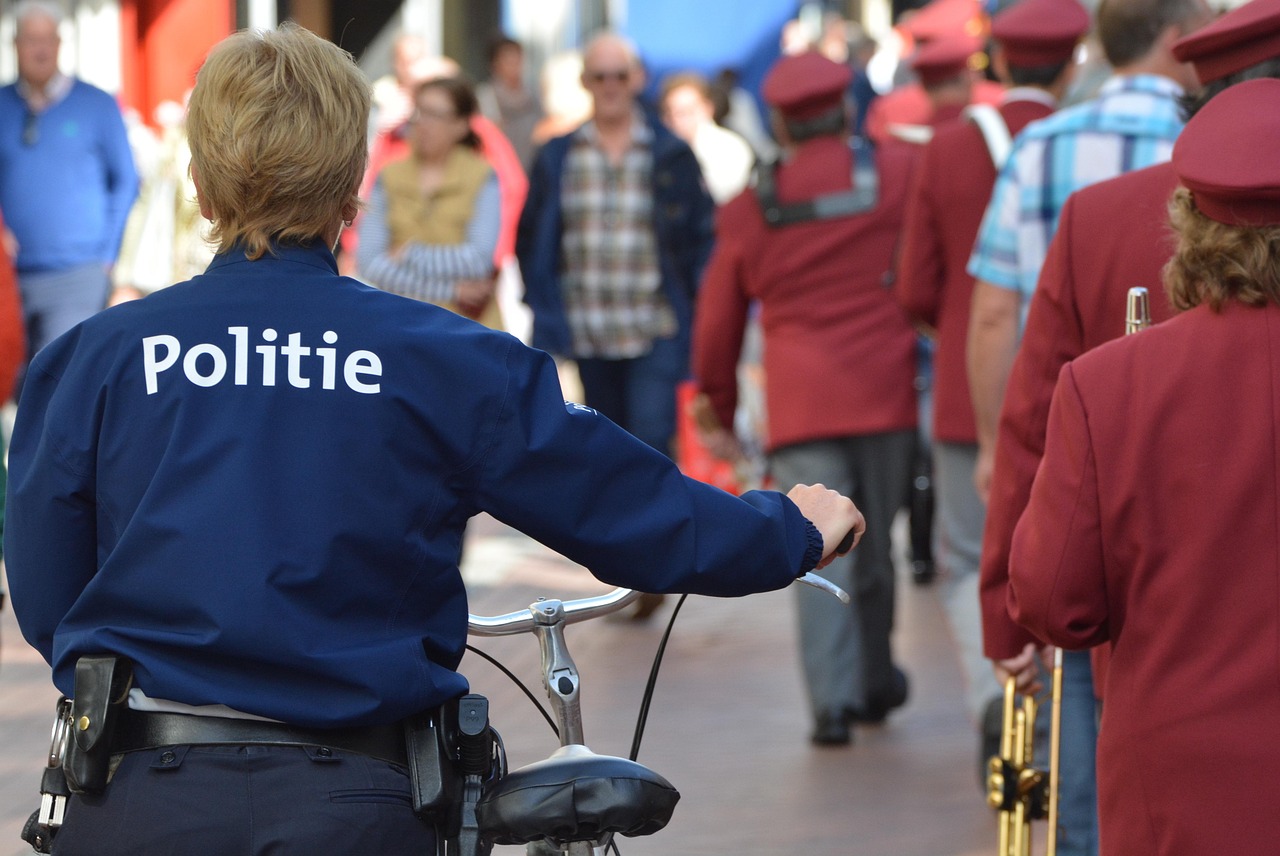Paw Patrol has become a global sensation, captivating the hearts of young audiences across various cultures. This article delves into the fascinating world of how this beloved children’s series is dubbed into multiple languages, ensuring it resonates with viewers from different backgrounds. The process of dubbing not only involves translating dialogue but also adapting the content to fit cultural contexts, making it a complex yet essential aspect of the show’s international success.
Understanding the Global Appeal of Paw Patrol
Paw Patrol’s charm lies in its relatable characters, engaging storylines, and positive messages about teamwork and problem-solving. Its ability to address universal themes makes it appealing to children worldwide. The show’s vibrant animation and catchy songs further enhance its attractiveness, allowing it to transcend language barriers and cultural differences.
The Dubbing Process Explained
The dubbing process is multifaceted, involving several key steps:
- Script Translation: The original script is translated into the target language, ensuring that the essence of the dialogue is preserved.
- Localization: Cultural references are adapted to resonate with local audiences. This may involve changing character names or scenarios that might not be familiar to the target demographic.
- Voice Casting: Selecting the right voice actors is crucial. They must embody the characters’ personalities and appeal to the audience.
- Recording and Editing: Voice performances are recorded and synchronized with the animation, requiring precise timing to ensure a seamless viewing experience.
Translation vs. Localization
While translation focuses solely on converting words, localization adapts the content for cultural relevance. This distinction is vital in ensuring that Paw Patrol remains relatable and engaging for children around the world. For example, a joke that works in English may not translate well into Spanish, necessitating a creative localization approach.
Choosing the Right Voice Actors
Voice actors play a pivotal role in bringing characters to life. The casting process often involves selecting individuals who not only have the right vocal qualities but also understand the cultural nuances of the target audience. This connection enhances the emotional impact of the show and fosters a deeper bond between the characters and viewers.
Popular Languages for Paw Patrol Dubbing
Paw Patrol has been dubbed into numerous languages, including:
- Spanish
- French
- German
- Chinese
- Portuguese
Each language version features unique adaptations that reflect local culture and preferences. For instance, the Spanish version incorporates regional slang, making it more relatable to young viewers in Spain and Latin America.
Impact of Dubbing on Viewer Engagement
Research indicates that dubbing significantly influences how children engage with Paw Patrol. Studies show that children are more likely to understand and enjoy the show when it is presented in their native language. This not only enhances their viewing experience but also aids in language acquisition and comprehension skills.
The Role of Streaming Platforms in Global Dubbing
Streaming platforms have transformed the way international audiences access Paw Patrol. Services like Netflix and Amazon Prime offer dubbed versions, making it easier for families to enjoy the show in their preferred language. This accessibility has contributed to the show’s growing popularity and cultural impact worldwide.
Future Trends in Dubbing for Children’s Shows
As technology evolves, so does the dubbing industry. Emerging trends include the use of artificial intelligence for voice modulation and real-time dubbing, which could revolutionize how children’s shows are produced and distributed. These advancements promise to enhance the viewing experience, making it even more engaging for young audiences.

Understanding the Global Appeal of Paw Patrol
Paw Patrol has become a beloved series for children around the globe, captivating young audiences with its engaging storylines and relatable characters. This section explores the various elements that contribute to its universal charm and why it resonates across different cultures.
One of the primary reasons for the show’s widespread appeal is its emphasis on teamwork and community service. Each episode features the Paw Patrol team, led by the resourceful Ryder, who work together to solve problems and help those in need. This theme of collaboration teaches children the importance of helping others and reinforces positive social values.
- Diverse Characters: The characters in Paw Patrol are not only adorable but also represent a variety of professions and skills. From Chase, the police pup, to Skye, the aviation expert, children can see themselves in these characters, fostering a sense of inclusion and aspiration.
- Adventure and Excitement: Each episode is filled with thrilling adventures that keep children engaged. The mix of action, humor, and problem-solving captivates young viewers, making them eager to watch more.
- Positive Role Models: The show features characters who display bravery, kindness, and resilience. These traits serve as excellent role models for children, encouraging them to develop similar qualities in their own lives.
Moreover, the show’s vibrant animation and catchy theme song contribute to its charm. The colorful visuals are designed to attract young eyes, while the music is memorable and easy to sing along with, enhancing the viewing experience.
Another significant aspect of Paw Patrol’s global appeal is its ability to adapt to various cultural contexts. The show is dubbed into multiple languages, allowing it to reach a wider audience. This localization process ensures that cultural references are relevant and relatable, making the stories resonate with children from different backgrounds.
For instance, in some countries, specific character traits or storylines may be modified to align with local customs and values. This thoughtful adaptation helps maintain the show’s charm while catering to diverse audiences, making it a truly global phenomenon.
Furthermore, the show’s educational content is a key factor in its success. Each episode imparts valuable lessons about problem-solving, responsibility, and the importance of community. Parents appreciate that the show provides entertainment while also promoting learning, making it a preferred choice for family viewing.
In conclusion, the universal charm of Paw Patrol lies in its engaging characters, positive messages, and ability to connect with children across different cultures. By combining adventure with valuable life lessons, it has not only captured the hearts of children but has also become a significant part of childhood experiences worldwide.

The Dubbing Process Explained
Paw Patrol is a beloved children’s show that has gained immense popularity across the globe. To ensure that its charm resonates with young audiences in various countries, the dubbing process plays a crucial role. This article delves into the intricate steps involved in dubbing Paw Patrol for international audiences, highlighting the importance of both translation and localization.
Dubbing is not merely about translating dialogue; it encompasses a series of steps that aim to recreate the show’s original essence while making it accessible to a different audience. Here is a breakdown of the key stages involved in the dubbing process:
- Script Translation: The first step in dubbing Paw Patrol involves translating the original script into the target language. This requires not only a literal translation of words but also an understanding of the context and emotions conveyed in the dialogue.
- Localization: After translation, the script undergoes localization. This step adapts cultural references, idioms, and humor to ensure that they resonate with the local audience. For example, a phrase that may be humorous in English may need to be completely rephrased to maintain its comedic effect in another language.
- Voice Casting: Selecting the right voice actors is vital to the dubbing process. Casting directors look for voices that match the characters’ personalities and appeal to the target demographic. This step often involves auditions and careful consideration of the actors’ previous work.
- Recording: Once the script is finalized and voice actors are selected, the next step is recording the dialogue. This is done in a sound studio where voice actors deliver their lines while watching the original footage to ensure proper timing and expression.
- Sound Engineering: After recording, sound engineers work on synchronizing the new dialogue with the characters’ lip movements. This technical aspect is crucial for maintaining the illusion that the characters are speaking in the target language.
- Quality Control: Finally, the dubbed episode undergoes quality checks to ensure that the audio levels are balanced, the dialogue is clear, and the overall quality meets broadcasting standards. This step is essential for providing a seamless viewing experience.
Each of these steps is essential in creating a version of Paw Patrol that not only conveys the original story but also feels authentic to the new audience. The importance of cultural relevance cannot be overstated; it ensures that children from different backgrounds can connect with the characters and themes presented in the show.
Understanding the difference between translation and localization is key to grasping the dubbing process. While translation focuses on converting text from one language to another, localization goes a step further by adapting content to fit cultural contexts. This means that localization takes into account the values, beliefs, and humor of the target audience, ensuring that the show resonates on a deeper level.
The choice of voice actors significantly impacts how the audience connects with Paw Patrol. A voice actor’s ability to convey emotion and personality can greatly influence the viewer’s perception of a character. For instance, a character that is playful and energetic in the original may require a voice that captures those qualities in the dubbed version. This careful selection process is crucial for maintaining the show’s appeal across different cultures.
Beyond the artistic elements, the technical side of dubbing involves advanced sound engineering and synchronization techniques. Engineers utilize sophisticated software to ensure that dialogue matches the original animation, creating a natural flow that enhances the viewing experience. This technical expertise is essential for producing high-quality content that meets international standards.
Through this comprehensive dubbing process, Paw Patrol continues to delight children around the world, proving that great storytelling transcends language barriers.
Translation vs. Localization
Translation and localization are two critical processes in the adaptation of content for different audiences, especially in the context of children’s programming like Paw Patrol. While translation is primarily concerned with converting words from one language to another, localization goes a step further by adapting the content to fit specific cultural contexts. Understanding this distinction is essential, particularly when considering the nuances involved in dubbing a beloved show like Paw Patrol.
Translation is often viewed as a straightforward task of replacing words in one language with their equivalents in another. However, this process can sometimes lead to a loss of meaning or emotional resonance if cultural differences are not taken into account. For example, a simple phrase that works in English may not have the same impact when translated directly into another language. This is where localization becomes crucial. It involves not just translating words but also modifying the content to make it culturally relevant and relatable to the target audience.
In the case of Paw Patrol, localization plays a vital role in maintaining the show’s appeal across different regions. The characters, storylines, and even the humor must resonate with local audiences. For instance, certain cultural references may need to be altered or replaced to ensure they are understood and appreciated by children in different countries. This could involve changing character names, adapting jokes, or even altering visual elements to reflect local customs and traditions.
The dubbing process of Paw Patrol involves multiple stages, beginning with the initial translation of the script. Once the translation is complete, the localization team reviews the content to ensure that it aligns with the cultural norms and expectations of the target audience. This often requires collaboration with local experts who understand the cultural landscape of the region. Their insights help to tailor the dialogue and narrative to create a version of Paw Patrol that feels authentic and engaging.
One of the most significant aspects of localization is the selection of voice actors. The voice talent chosen for the dubbed version must not only be proficient in the language but also capable of capturing the essence of the characters. This is especially important in children’s programming, where the connection between the audience and the characters can significantly influence engagement and enjoyment. The right voice can bring a character to life in a way that resonates with local viewers, making them feel more connected to the story.
Moreover, localization extends beyond just language and voice. It encompasses visual elements as well, such as graphics and animations that may be tailored to fit local tastes and cultural aesthetics. This attention to detail ensures that Paw Patrol remains relevant and appealing, regardless of where it is viewed.
In conclusion, the distinction between translation and localization is crucial in the dubbing of Paw Patrol. While translation focuses on words, localization ensures that the content is culturally appropriate and resonates with the audience. This comprehensive approach not only enhances viewer engagement but also solidifies the show’s global appeal, making it a beloved series for children around the world.
Importance of Cultural Relevance
In the world of children’s entertainment, cultural relevance plays a pivotal role in ensuring that shows like Paw Patrol resonate with their young audiences across different regions. The adaptation of cultural references is not merely a matter of translation; it involves a deeper understanding of local customs, values, and social norms. This section delves into how localization enhances the show’s appeal and maintains its charm in various cultural contexts.
Localization goes beyond translating dialogue. It requires a comprehensive approach to ensure that the humor, themes, and character interactions align with the expectations and experiences of children in different countries. For instance, while a specific joke may work well in one culture, it might not translate effectively to another. Therefore, localization teams must carefully consider how to modify these elements while preserving the essence of the original content.
One significant aspect of localization is the adaptation of cultural references. For example, in the United States, the show might incorporate references to popular holidays like Halloween or Thanksgiving. However, in countries where these holidays are not celebrated, the localization team may replace these references with local festivities that children can relate to, such as Diwali in India or Carnival in Brazil. This ensures that the show feels familiar and engaging to its audience.
Moreover, the choice of voice actors is crucial in maintaining cultural relevance. Local voice talent can bring a unique flavor to the characters, making them more relatable to the audience. For instance, using well-known local celebrities can enhance the show’s appeal, as children are more likely to connect with voices they recognize and admire. This connection fosters a deeper emotional engagement with the characters and, by extension, the show itself.
Furthermore, the themes explored in Paw Patrol are often universal, such as teamwork, friendship, and problem-solving. However, the way these themes are presented can vary significantly depending on cultural contexts. For instance, the portrayal of authority figures, such as police officers or firefighters, might differ based on local perceptions and societal norms. In some cultures, these figures are celebrated, while in others, they may be viewed with skepticism. Localization teams must navigate these nuances to ensure that the show is received positively.
Another important factor is the visual elements of the show. Colors, symbols, and even character designs may need adjustments to align with cultural preferences. For example, certain colors may have different meanings in various cultures, and what is considered appealing in one country may not be the same in another. By adapting these visual aspects, the show can create a more welcoming environment for its audience.
In conclusion, the importance of cultural relevance in the localization of Paw Patrol cannot be overstated. By adapting cultural references, selecting appropriate voice actors, addressing societal norms, and adjusting visual elements, the show maintains its global appeal while resonating with children in diverse regions. This thoughtful approach not only enhances viewer engagement but also fosters a sense of connection and belonging among young audiences, making Paw Patrol a beloved favorite worldwide.
Choosing the Right Voice Actors
In the world of animated television, voice actors are the unsung heroes who breathe life into beloved characters. Their performances not only convey emotions but also establish a deep connection between the audience and the characters they portray. In the case of Paw Patrol, the choice of voice actors is crucial, as it directly impacts how the show is perceived across different languages and cultures.
The casting process for voice actors involves several considerations. First and foremost, the character’s personality must align with the voice actor’s vocal qualities. For instance, a character that is energetic and playful may require a voice actor who can bring that enthusiasm to life. This is particularly important in children’s programming, where the right voice can make a character relatable and engaging.
Moreover, the cultural context of the audience plays a significant role in the casting decisions. When dubbing Paw Patrol for international audiences, producers often seek voice actors who not only fit the character’s profile but also resonate with local viewers. This means that a voice actor in the Spanish version may have a different style and tone than their English counterpart, reflecting cultural nuances and preferences.
In addition to vocal talent, voice actors often bring their own unique flair to the characters. This individuality can enhance the character’s appeal, making them more memorable to the audience. For example, a voice actor might add a specific intonation or catchphrase that becomes iconic in that particular language version of the show.
The emotional range that voice actors can convey is also vital. In scenes that require humor, sadness, or excitement, a skilled voice actor can elevate the material, making it more impactful. Research indicates that children are more likely to engage with characters that evoke strong emotional responses, thus reinforcing the importance of choosing the right voice talent.
Furthermore, the process of selecting voice actors often involves auditions and tests to gauge how well they can embody the character. Directors and producers may look for actors who can demonstrate versatility, allowing them to adapt to various emotional contexts within the show. This adaptability is crucial, especially in a series like Paw Patrol, where episodes often tackle different themes and challenges.
Another aspect to consider is the chemistry between voice actors. In many instances, characters are paired together, and the dynamic between their voices can greatly influence the audience’s perception. A strong connection between voice actors can enhance the believability of their interactions, making the storyline more engaging for viewers.
Finally, the impact of voice actors extends beyond the screen. Many children develop a sense of attachment to their favorite characters, often associating them with the voices they hear. This bond can influence their viewing habits and preferences, demonstrating the lasting effect that voice actors have on the show’s success.
In conclusion, the process of choosing the right voice actors for Paw Patrol is a multifaceted endeavor that requires careful consideration of various factors. From vocal talent and emotional range to cultural relevance and chemistry, each decision contributes to the overall impact of the show on its audience. As the global landscape of children’s programming continues to evolve, the significance of casting the right voice actors remains a cornerstone of creating engaging and relatable content.
Technical Aspects of Dubbing
The world of dubbing is a fascinating intersection of art and technology, particularly evident in beloved children’s shows like Paw Patrol. The are crucial for creating an immersive and enjoyable viewing experience for audiences across the globe. This section will explore the intricate processes involved in sound engineering and synchronization, which work together to seamlessly blend original content with translated dialogue.
At the heart of dubbing is sound engineering, which encompasses a variety of tools and techniques designed to manipulate audio for the best possible results. One of the primary tools used in this field is digital audio workstations (DAWs), which allow sound engineers to edit, mix, and enhance audio tracks. Popular DAWs like Avid Pro Tools and Adobe Audition provide a platform for voice recordings, sound effects, and background music to be combined harmoniously.
Another important aspect of sound engineering is audio synchronization. This process ensures that the dubbed dialogue aligns perfectly with the characters’ lip movements and actions on screen. To achieve this, voice actors often perform their lines while watching the original footage, a technique known as looping or ADR (Automated Dialogue Replacement). This method allows for precise timing and ensures that the emotional tone of the original performance is captured in the new language.
Moreover, the choice of microphones and recording environments can significantly impact the quality of the final product. High-quality condenser microphones and soundproof studios are typically used to capture clear and crisp audio, minimizing background noise that could detract from the viewing experience. Additionally, sound engineers use various audio effects like equalization and compression to enhance the clarity and richness of the voice recordings.
In addition to sound engineering, the technical side of dubbing also involves mixing and mastering. Mixing refers to the process of balancing different audio elements, such as dialogue, sound effects, and music, to create a cohesive soundscape. This is followed by mastering, which involves preparing the final audio for distribution by ensuring that it meets industry standards for loudness and clarity.
To illustrate the importance of these technical aspects, consider the following table that outlines the key stages of the dubbing process:
| Stage | Description |
|---|---|
| Pre-Production | Script translation and localization to fit cultural contexts. |
| Recording | Voice actors record their lines in a soundproof studio. |
| Editing | Sound engineers edit the audio tracks for clarity and synchronization. |
| Mixing | Balancing dialogue, sound effects, and music for a cohesive experience. |
| Mastering | Final adjustments to ensure audio quality meets distribution standards. |
In conclusion, the technical aspects of dubbing are vital in creating a seamless viewing experience for shows like Paw Patrol. By employing advanced sound engineering techniques and ensuring precise synchronization, dubbing professionals are able to deliver high-quality adaptations that resonate with international audiences. As technology continues to evolve, so too will the methods used in dubbing, promising even more engaging experiences for viewers around the world.

Popular Languages for Paw Patrol Dubbing
Paw Patrol has become a beloved children’s series, captivating young audiences around the globe. One of the key factors contributing to its widespread popularity is its ability to resonate with children in various cultural contexts. The show has been dubbed into numerous languages, each adaptation reflecting unique cultural nuances and preferences. In this section, we will explore some of the most popular languages into which Paw Patrol has been dubbed and the distinctive adaptations made for each.
The Spanish version of Paw Patrol is particularly noteworthy, as it caters to a vast audience across multiple countries, including Spain and Latin America. The dubbing process involves not just translation but also localization, ensuring that cultural references are relatable to Spanish-speaking children. For instance, character names may be altered to resonate better with local audiences, and certain jokes or phrases are adapted to reflect regional humor.
In the French adaptation of Paw Patrol, the localization process goes beyond mere translation. The dialogue is often restructured to maintain the rhythm and flow of the original script while ensuring it sounds natural in French. Additionally, some character names are modified to reflect French culture, enhancing the connection with the audience. This attention to detail helps maintain the show’s charm and humor.
The German version of Paw Patrol emphasizes clarity and precision in language. The dubbing team focuses on delivering a clear articulation of the dialogue, catering to young viewers who are still developing their language skills. Furthermore, the use of local idioms and expressions helps the show feel more familiar to German children, making it easier for them to relate to the characters and their adventures.
In Italy, Paw Patrol is adapted to emphasize themes of family and community, which are central to Italian culture. The dubbing often includes references to local customs and traditions, allowing children to see their own lives reflected in the stories. Voice actors are carefully chosen not only for their vocal talent but also for their ability to convey warmth and connection, which resonates deeply with Italian audiences.
The Japanese adaptation of Paw Patrol showcases a strong emphasis on cultural sensitivity. The dubbing process involves not just translating the dialogue but also adapting it to align with Japanese social norms and values. This means that certain behaviors or expressions may be altered to fit the expectations of Japanese viewers, ensuring that the show is both entertaining and culturally appropriate.
Paw Patrol’s Mandarin Chinese version has gained immense popularity in China. The dubbing team works diligently to ensure that the humor and excitement of the original are preserved while making necessary cultural adjustments. Specific references to Western culture are replaced with local equivalents, allowing Chinese children to relate better to the characters and their adventures.
The Arabic version of Paw Patrol focuses on themes of community and teamwork, which are highly valued in many Arabic cultures. The dubbing process involves careful selection of voice actors who can convey these themes effectively. Additionally, the adaptation often incorporates local idioms and expressions, making the dialogue feel more organic and relatable to Arabic-speaking children.
In conclusion, the dubbing of Paw Patrol into various languages is a testament to the show’s global appeal and the importance of cultural adaptation. Each version is thoughtfully crafted to ensure that it resonates with local audiences, making Paw Patrol not just a show, but a shared experience for children around the world.
Spanish Dubbing: A Case Study
Spanish-speaking audiences have embraced their own version of Paw Patrol, a beloved animated series that has transcended language barriers. This adaptation is not just a simple translation; it involves a meticulous process of localization that ensures cultural relevance and resonance with its audience.
The adaptation of Paw Patrol for Spanish-speaking viewers includes a variety of cultural references that align with the values and traditions of these communities. For instance, certain episodes may incorporate elements of Hispanic culture, such as local festivities, traditional foods, and familiar social dynamics. These adjustments create a sense of familiarity and connection for young viewers, making the show more relatable and engaging.
One of the key aspects of the Spanish dubbing process is the selection of voice talent. The voice actors chosen for the Spanish version of Paw Patrol are not only skilled in their craft but also understand the cultural nuances that resonate with the audience. This casting decision is crucial, as the voice actors bring the characters to life in a way that feels authentic and appealing to Spanish-speaking children. Their ability to convey emotions and humor in a culturally relevant manner enhances the overall viewing experience.
| Character | Original Voice Actor | Spanish Voice Actor |
|---|---|---|
| Chase | Justin Paul Kelly | Jorge Arvizu |
| Marshall | Gage Munroe | Joaquín Cosío |
| Skye | Kallan Holley | Patricia Acevedo |
Moreover, the localization process extends beyond just dialogue. The show’s visual elements, including graphics and text, are also adapted to ensure they resonate with the Spanish-speaking audience. This comprehensive approach allows the show to maintain its integrity while also appealing to the cultural sensibilities of its viewers.
In addition to cultural references and voice talent, the marketing strategies for the Spanish version of Paw Patrol also play a significant role in its success. Promotional materials, merchandise, and social media campaigns are tailored to engage Spanish-speaking families, further solidifying the show’s popularity within this demographic.
By analyzing the Spanish adaptation of Paw Patrol, it becomes clear that the show’s creators are committed to delivering a version that is not only entertaining but also culturally significant. This dedication to localization ensures that Spanish-speaking children can enjoy Paw Patrol in a way that feels personal and meaningful.
Overall, the Spanish dubbing of Paw Patrol serves as a prime example of how children’s programming can be effectively adapted to meet the needs of diverse audiences. Through careful attention to cultural details, voice casting, and marketing strategies, the show continues to thrive and captivate young viewers across the Spanish-speaking world.
French Adaptations of Paw Patrol
Paw Patrol has become a beloved children’s show around the globe, and its French adaptation is no exception. The French version of Paw Patrol offers unique twists that cater specifically to the tastes and cultural nuances of French-speaking audiences. This adaptation goes beyond mere translation; it involves a careful consideration of how dialogue, character names, and even storylines resonate with French viewers.
One of the most notable changes in the French adaptation is the localization of character names. For instance, characters that may have straightforward names in English are often given names that are more relatable or amusing in French. This not only enhances the connection that young viewers feel towards the characters but also makes the show more engaging. For example, the character of Chase is known as Ryder in France, a name that carries a sense of adventure and heroism, appealing to the French audience’s love for dynamic storytelling.
Additionally, the dialogue in the French version is tailored to incorporate cultural references that resonate with local audiences. This means that jokes, idioms, and expressions are adapted to reflect the everyday language and humor of French children. Such changes ensure that the show remains funny and relatable, allowing French children to enjoy the same level of engagement as their English-speaking counterparts.
Moreover, the French adaptation also considers the cultural context of the stories presented. Certain episodes may be modified to include themes or scenarios that are more relevant to French culture. For instance, episodes that feature community service or teamwork may be infused with references to local events or holidays, thereby enhancing their relevance and relatability.
The voice actors chosen for the French adaptation also play a crucial role in the show’s success. The casting of talented voice actors who can convey the right emotions and energy is vital. These actors not only lend their voices but also bring a unique flavor to the characters that aligns with French cultural expectations. This aspect of the adaptation is particularly important, as the voices help to create a connection with the audience, making the characters feel more authentic and engaging.
Furthermore, the music and sound effects in the French version are also adapted to fit the local audience. Catchy songs and sound effects that are familiar to French children are incorporated, making the viewing experience more enjoyable. Music plays a significant role in children’s programming, and ensuring that it resonates with the audience is key to maintaining their interest.
In summary, the French adaptation of Paw Patrol showcases how thoughtful localization can transform a show into a culturally relevant experience. By changing character names, adapting dialogue, and incorporating local cultural references, the French version not only entertains but also educates young viewers in a way that feels familiar and engaging. The success of this adaptation underscores the importance of understanding and respecting cultural differences in children’s programming, ensuring that Paw Patrol remains a cherished show across different languages and cultures.

Impact of Dubbing on Viewer Engagement
Paw Patrol has become a beloved series among children globally, but the way it is received can vary significantly depending on the language in which it is dubbed. The impact of dubbing on viewer engagement is crucial, as studies have shown that language plays a vital role in children’s understanding and enjoyment of the show. This section delves into how dubbing influences the overall experience for young audiences.
When children watch Paw Patrol in their native language, they are more likely to connect with the characters and storylines. This connection is often heightened by the use of familiar phrases and cultural references that resonate with their everyday experiences. For instance, a study conducted by the University of California found that children who watched a dubbed version of a popular show in their language displayed higher levels of engagement and comprehension compared to those who viewed it in the original language with subtitles.
Moreover, dubbing allows for a more immersive experience. Children are generally more attentive and less distracted when they can fully understand the dialogue without the need to read subtitles. This is particularly important for younger viewers who may not yet be proficient in reading. The American Psychological Association emphasizes that early exposure to content in a child’s native language can enhance language acquisition and cognitive development.
Additionally, the choice of voice actors is integral to the dubbing process. A well-cast voice actor can bring a character to life in a way that resonates with local audiences. For example, when dubbing Paw Patrol for Spanish-speaking audiences, the voice actors often incorporate regional accents and idiomatic expressions, making the characters feel more relatable. This cultural adaptation not only strengthens the connection between the audience and the show but also enriches the viewing experience.
On the other hand, poor dubbing can detract from the show’s appeal. If the translation is not done well or if the voice acting fails to capture the essence of the characters, viewers may feel disconnected. Research indicates that children are particularly sensitive to discrepancies between the visuals and the audio. A mismatched voice can lead to confusion and a lack of engagement, ultimately affecting their enjoyment of the show.
Furthermore, the impact of dubbing extends beyond individual viewer experiences. It shapes the cultural landscape by introducing local interpretations of global content. As Paw Patrol is adapted for various regions, it reflects local values and norms, allowing children to see themselves represented in the stories. This localization fosters a sense of belonging and identity among young viewers, reinforcing the show’s significance in their lives.
In summary, the way Paw Patrol is dubbed significantly influences how children engage with the series. Effective dubbing enhances comprehension, fosters emotional connections, and ensures cultural relevance. As the show continues to reach audiences worldwide, the importance of thoughtful localization and quality voice acting cannot be overstated. These elements are essential for maintaining the show’s popularity and ensuring that it resonates with children across different cultures.

The Role of Streaming Platforms in Global Dubbing
In recent years, the entertainment landscape has undergone a significant transformation, particularly with the rise of streaming platforms. These platforms have not only changed how we consume content but have also played a pivotal role in making shows like Paw Patrol accessible to a global audience. This section delves into how platforms such as Netflix have facilitated the distribution of dubbed versions of Paw Patrol, allowing children from diverse linguistic backgrounds to enjoy the adventures of Ryder and his team of heroic pups.
Streaming platforms have become the primary medium through which families access children’s programming. With their extensive libraries and user-friendly interfaces, platforms like Netflix have made it easier than ever for parents to find appropriate content for their children. One of the most significant advantages is the availability of dubbed versions, which allows non-English speaking audiences to engage with the show in their native language.
Moreover, the dubbing process employed by these platforms ensures that the essence of the original show is preserved while making it relatable to local audiences. This involves not just a direct translation of dialogue but also an adaptation of cultural references and humor, which can vary significantly from one region to another. For instance, Netflix collaborates with local dubbing studios to ensure that the voice actors chosen can convey the characters’ emotions and personalities effectively.
Additionally, streaming services often provide multiple language options, catering to the diverse needs of their subscribers. This feature is particularly beneficial in multilingual countries, where children may speak different languages at home and school. By offering dubbed versions in various languages, streaming platforms enhance the viewing experience and foster a sense of inclusivity.
Another key aspect of the role of streaming platforms in global dubbing is their ability to reach remote and underserved markets. Traditional broadcasting methods often struggle to provide localized content in every region, but streaming services can easily adapt their offerings. This means that children in countries with limited access to English-language programming can still enjoy popular shows like Paw Patrol, thereby broadening the show’s reach and impact.
Furthermore, the use of data analytics by streaming platforms allows them to understand viewer preferences and trends. By analyzing which dubbed versions are most popular, they can make informed decisions about future adaptations and content offerings. This responsiveness to audience demand not only helps in retaining subscribers but also ensures that shows like Paw Patrol remain relevant and engaging across different cultures.
In summary, streaming platforms have fundamentally changed the landscape of children’s programming by providing easy access to dubbed versions of popular shows like Paw Patrol. Their ability to adapt content for various cultural contexts, combined with the flexibility of offering multiple language options, has revolutionized how international audiences experience this beloved series. As technology continues to evolve, we can expect these platforms to further enhance their dubbing processes, ensuring that children everywhere can enjoy the adventures of their favorite characters.

Future Trends in Dubbing for Children’s Shows
The dubbing industry is undergoing a significant transformation as it adapts to the rapid advancements in technology and the changing preferences of audiences. Children’s shows, particularly popular ones like Paw Patrol, are at the forefront of these changes. In this section, we will explore the emerging trends that are shaping the future of dubbing for children’s programming.
One of the most exciting developments in the dubbing industry is the integration of artificial intelligence (AI). AI technologies can streamline the dubbing process by automating parts of the translation and synchronization tasks. This not only speeds up production but also enhances the accuracy of translations. As AI tools continue to improve, we can expect a more efficient workflow in creating high-quality dubbed content for shows like Paw Patrol.
With advancements in data analytics, streaming platforms are beginning to offer personalized viewing experiences. Children can choose their preferred language and even different voice actors for their favorite shows. This level of customization makes the viewing experience more engaging and allows children to connect with the characters in a way that resonates with their cultural backgrounds.
As global audiences become more diverse, the importance of cultural sensitivity in dubbing is paramount. Dubbing teams are increasingly working with local cultural consultants to ensure that adaptations are respectful and relevant. This approach not only enhances the authenticity of the show but also fosters a deeper connection with the audience. For instance, in dubbing Paw Patrol, cultural references and humor are tailored to fit the values and norms of different regions.
Another trend gaining traction is the development of interactive dubbing techniques. These allow viewers to engage with the content in real-time, making choices that affect the storyline or character interactions. Imagine a scenario where children can select different dialogue options while watching Paw Patrol, creating a unique viewing experience every time. This kind of interactivity not only keeps children engaged but also encourages language learning.
To further enhance the appeal of dubbed content, production teams are collaborating with local influencers and voice actors who resonate with the target audience. By incorporating familiar voices, shows like Paw Patrol can build a stronger connection with children, making the characters feel more relatable and engaging.
As streaming platforms expand their reach, the demand for multi-language options is increasing. Viewers are now expecting to see multiple dubbing options available for a single show. This trend allows families from different linguistic backgrounds to enjoy the same content together, fostering a shared viewing experience that is inclusive and diverse.
As we look to the future, the dubbing industry for children’s shows like Paw Patrol is poised for exciting changes. With the integration of AI, a focus on cultural sensitivity, and the rise of interactive technologies, the way children experience their favorite shows will continue to evolve. These trends not only enhance the quality of dubbed content but also ensure that it remains relevant and engaging for audiences worldwide.
Frequently Asked Questions
- What is the significance of dubbing Paw Patrol in different languages?
Dubbing Paw Patrol in various languages allows the show to reach a wider audience, ensuring that children from different cultures can enjoy and understand the stories. It enhances their viewing experience by making the content relatable and engaging.
- How does localization differ from translation in the context of Paw Patrol?
Localization goes beyond mere translation; it adapts the show’s dialogue and cultural references to resonate with local audiences. This means that while the words may change, the essence and humor of the show remain intact, making it more enjoyable for kids.
- Why are voice actors crucial in the dubbing process?
Voice actors are the heart and soul of dubbing. They bring characters to life with their unique interpretations, which can significantly influence how the audience connects with the show. A great voice can turn a good show into a beloved classic!
- What role do streaming platforms play in the distribution of dubbed versions?
Streaming platforms like Netflix have revolutionized access to dubbed content, allowing viewers from all over the world to enjoy Paw Patrol in their native languages. This accessibility has made it easier for families to find and watch their favorite shows, no matter where they are.
- What are some future trends in the dubbing industry for children’s shows?
As technology advances, we can expect more sophisticated dubbing techniques, including AI-driven voice synthesis and real-time translation. These innovations will likely enhance how children experience shows like Paw Patrol, making them even more interactive and engaging.



























